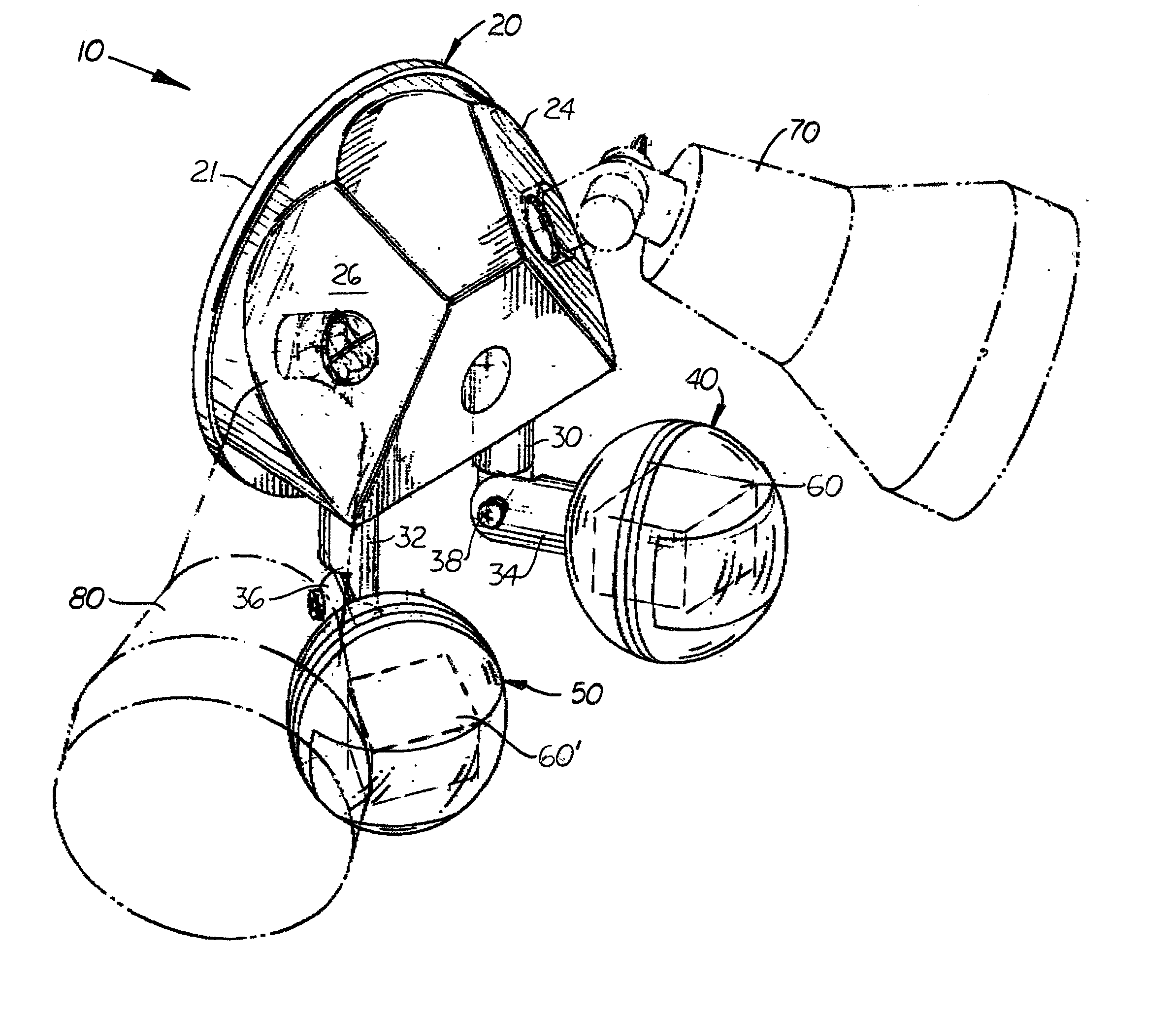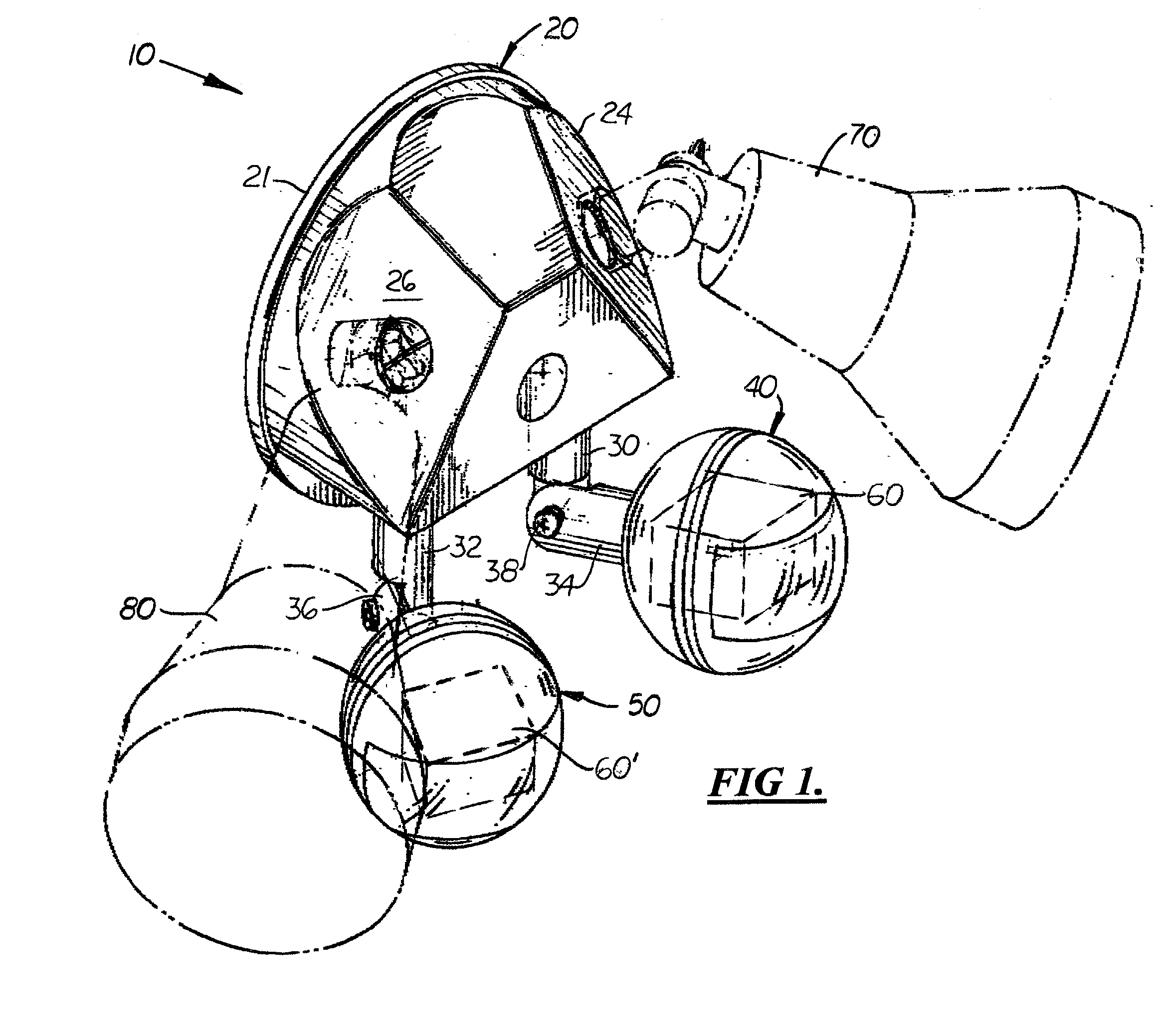Dual eye motion detector assembly
a motion detector and assembly technology, applied in the field of motion detectors, can solve the problems of reducing reducing the viewing angle of the sensor box, and affecting the operation of the sensor
- Summary
- Abstract
- Description
- Claims
- Application Information
AI Technical Summary
Benefits of technology
Problems solved by technology
Method used
Image
Examples
Embodiment Construction
)
[0023] Referring to the accompanying FIGS. 1-9, there is shown and described a dual motion detector assembly 10 comprising a main motion sensor head 40 and a secondary motion sensor head 50 both mounted on a mounting box 20. Located inside the main motion sensor head 40 and the secondary motion sensor head 50 are standard, single lens motion sensors 60, 60' respectively, each designed to provide an approximate 110-degree viewing zone as shown in FIG. 8. Both the main motion sensor head 40 and secondary motion sensor head 50 are pivotally mounted to rigid arms 34, 36, respectively, that are connected to vertically aligned, rotatably adjusted posts 30, 32, respectively, that extend downward from the bottom surface 21 mounting box 20.
[0024] In the preferred embodiment, the mounting box 20 is a five-sided structure with a flat mounting plate 21 selectively attached over its rear opening 25. The bottom surface 22 of the mounting box 20 is flat and horizontally aligned and opposite a fla...
PUM
 Login to View More
Login to View More Abstract
Description
Claims
Application Information
 Login to View More
Login to View More - R&D
- Intellectual Property
- Life Sciences
- Materials
- Tech Scout
- Unparalleled Data Quality
- Higher Quality Content
- 60% Fewer Hallucinations
Browse by: Latest US Patents, China's latest patents, Technical Efficacy Thesaurus, Application Domain, Technology Topic, Popular Technical Reports.
© 2025 PatSnap. All rights reserved.Legal|Privacy policy|Modern Slavery Act Transparency Statement|Sitemap|About US| Contact US: help@patsnap.com



